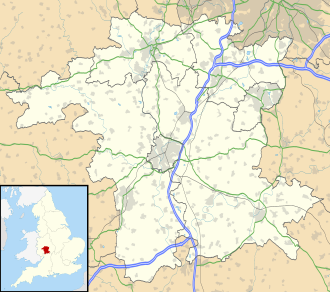| St Wulstan's, Little Malvern | |
|---|---|
| Church of St Wulstan | |
 | |
Location in Worcestershire | |
| 52°04′00″N2°20′08″W / 52.0666°N 2.3356°W | |
| Location | Little Malvern, Worcestershire |
| Country | England |
| Denomination | Catholic Church |
| Religious order | Benedictine Order |
| Website | www |
| History | |
| Dedication | St Wulstan |
| Dedicated | 1861-1862 |
| Associated people | Edward Elgar |
| Architecture | |
| Heritage designation | Grade II-listed |
| Designated | 23 February 1987 |
| Architect | Benjamin Bucknall |
| Architectural type | Gothic Revival |
| Years built | 1862 |
| Administration | |
| Archdiocese | Birmingham |
| Clergy | |
| Archbishop | Bernard Longley |
| Priest | Rev. Father Thomas Regan OSB |
St Wulstan's Roman Catholic Church, Little Malvern, Worcestershire, England is a Benedictine parish church administered by the monks of Downside Abbey. The attached churchyard contains the grave of the composer Edward Elgar and of his wife, Alice. The church was designed in 1862 in a Gothic Revival style by Benjamin Bucknall. It is a Grade II listed building. The Elgars' grave has a separate Grade II listing.





